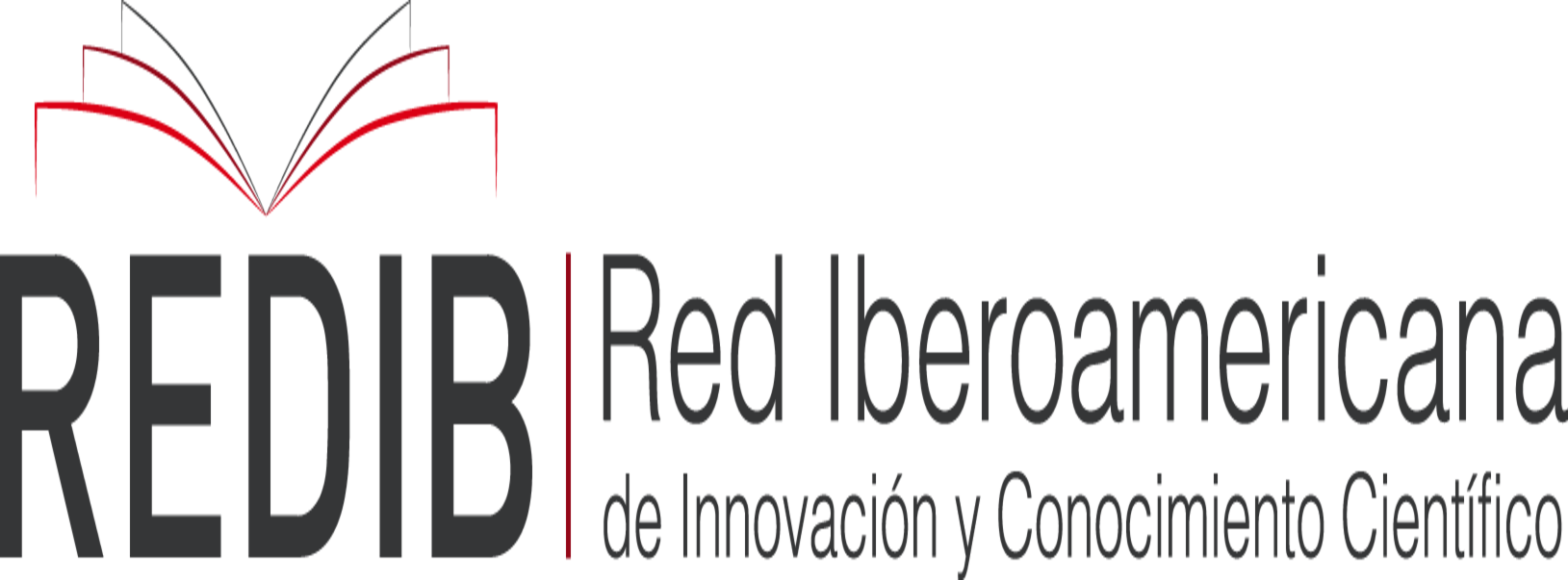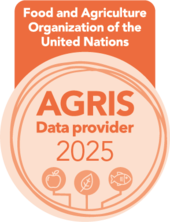Influencia de bioestimulantes y aguas contaminadas en la morfología del girasol ornamental Helianthus annuus L.
DOI:
https://doi.org/10.57188/manglar.2023.014Abstract
Los bioestimulantes y las aguas influyen en el desarrollo del cultivo, por esta razón se planteó el objetivo evaluar la influencia de bioestimulantes y agua contamina en la morfología del girasol ornamental. Realizadas las pruebas estadísticas sobre las variables morfológicas se determinó que si existieron diferencias significativas entre las variables determinadas por el ANOVA, donde las variables largo de planta, número de hojas, distancia entre nudos, pedúnculo, masa de raíz, masa de planta en freso y masa de planta en fresco presentaron diferencia significativas entre los grupos; contrario a las variables diámetro del tallo, ancho de hojas y largo de las hojas donde no se presentaron diferencias significativas. El tratamiento con el bioestimulante Algaser (Algas marinas) presentaron las diferencias significativas (α = 0,05) más importantes dentro del estudio, seguido por el tratamiento con agua destilada, Rady max (Aminoácidos + Fertilizante inorgánico) y Flizz (Aminoácidos) el agua de canal en todas las variables morfológicas presento las medias más bajas entre los tratamientos. Se demostró que los bioestimulantes y la calidad del agua tienen un impacto significativo en el desarrollo morfológico del girasol ornamental.
Downloads
References
Antón‐Herrero, R., Vega‐Jara, L., García‐Delgado, C., Mayans, B., Camacho‐Arévalo, R., Moreno‐Jiménez, E., Plaza, C., & Eymar, E. (2022). Synergistic effects of biochar and biostimulants on nutrient and toxic element uptake by pepper in contaminated soils. Journal of the Science of Food and Agriculture, 102(1), 167–174. https://doi.org/10.1002/jsfa.11343
Arcos, C., & Carrera, A. (2023). Obstacles to Innovative Activities: Case of the Floriculture Sector in Ecuador (pp. 67–94). https://doi.org/10.1007/978-3-031-17960-0_4
Bravo Delgado, H. R., & Días López, E. (2021). Variabilidad genética en raíz de girasol mediante gamma de 60Co. Revista Mexicana de Ciencias Agrícolas, 12(3), 461–472. https://doi.org/10.29312/remexca.v12i3.2597
Castro, C., Castañeda, Z., Ruiz, K. R., González, G., & Poveda, G. (2020). El sector florícola ecuatoriano y su afectación en el mercado internacional producto de la pandemia causada por el Covid-19. In CONGRESO INTERNACIONAL VIRTUAL SOBRE COVID-19.
de Lima Franzen, F., Rodrigues de Oliveira, M. S., Lidório, H. F., Farias Menegaes, J., & Martins Fries, L. L. (2019). Composición química de pétalos de flores de rosa, girasol y caléndula para su uso en la alimentación humana. Ciencia y Tecnología Agropecuaria, 20(1). https://doi.org/10.21930/rcta.vol20_num1_art:1252
du Jardin, P. (2015). Plant biostimulants: Definition, concept, main categories and regulation. Scientia Horticulturae, 196, 3–14. https://doi.org/10.1016/j.scienta.2015.09.021
Fatima, T., & Arora, N. K. (2021). Pseudomonas entomophila PE3 and its exopolysaccharides as biostimulants for enhancing growth, yield and tolerance responses of sunflower under saline conditions. Microbiological Research, 244, 126671. https://doi.org/10.1016/j.micres.2020.126671
Festing, M. F. W. (2020). The “completely randomised” and the “randomised block” are the only experimental designs suitable for widespread use in pre-clinical research. Scientific Reports, 10(1), 17577. https://doi.org/10.1038/s41598-020-74538-3
Funes-Pinter, I., Pisi, G., Aroca, M., & Uliarte, E. M. (2023). Compost tea and bioslurry as plant biostimulants. Part 2: biofertilizer test in ornamental flowers. Journal of Plant Nutrition, 1–12. https://doi.org/10.1080/01904167.2023.2171883
Hung, S.-H. W., Huang, T.-C., Lai, Y.-C., Wu, I.-C., Liu, C.-H., Huarng, Y.-F., Hwang, H.-H., Chiang, E.-P. I., Kuo, C.-H., & Huang, C.-C. (2023). Endophytic Biostimulants for Smart Agriculture: Burkholderia seminalis 869T2 Benefits Heading Leafy Vegetables In-Field Management in Taiwan. Agronomy, 13(4), 967. https://doi.org/10.3390/agronomy13040967
Kisvarga, S., Farkas, D., Boronkay, G., Neményi, A., & Orlóci, L. (2022). Effects of Biostimulants in Horticulture, with Emphasis on Ornamental Plant Production. Agronomy, 12(5), 1043. https://doi.org/10.3390/agronomy12051043
Kovaliova, O., Tchoursinov, Y., Kalyna, V., Koshulko, V., Kunitsia, E., Chernukha, A., Bezuglov, O., Bogatov, O., Polkovnychenko, D., & Grigorenko, N. (2020). Identification of patterns in the production of a biologically-active component for food products. Eastern-European Journal of Enterprise Technologies, 2(11 (104)), 61–68. https://doi.org/10.15587/1729-4061.2020.200026
Loconsole, D., Cristiano, G., & De Lucia, B. (2023). Biostimulant Application, under Reduced Nutrient Supply, Enhances Quality and Sustainability of Ornamental Containerized Transplants. Agronomy, 13(3), 765. https://doi.org/10.3390/agronomy13030765
Luna-Romero, A., Ramírez, I., Sánchez, C., Conde, J., Agurto, L., & Villaseñor, D. (2018). Spatio-temporal distribution of precipitation in the Jubones river basin, Ecuador: 1975-2013. Scientia Agropecuaria, 9(1), 63–70. https://doi.org/10.17268/sci.agropecu.2018.01.07
Mahmood, A., Awan, M. I., Sadaf, S., Mukhtar, A., Wang, X., Fiaz, S., Khan, S. A., Ali, H., Muhammad, F., Hayat, Z., Gul, F., & Fahad, S. (2022). Bio-diesel production of sunflower through sulphur management in a semi-arid subtropical environment. Environmental Science and Pollution Research, 29(9), 13268–13278. https://doi.org/10.1007/s11356-021-16688-z
Montoneri, E., Baglieri, A., & Fascella, G. (2022). Biostimulant Effects of Waste Derived Biobased Products in the Cultivation of Ornamental and Food Plants. Agriculture, 12(7), 994. https://doi.org/10.3390/agriculture12070994
Mystkowska, I., & Dmitrowicz, A. (2023). Evaluation of the Effect of Biostimulants on Palatability and Flesh Darkening of Raw and Cooked Tubers of <i>Helianthus tuberosus</i> Journal of Ecological Engineering, 24(6), 119–128. https://doi.org/10.12911/22998993/162783
Parađiković, N., Teklić, T., Zeljković, S., Lisjak, M., & Špoljarević, M. (2019). Biostimulants research in some horticultural plant species—A review. Food and Energy Security, 8(2), e00162. https://doi.org/10.1002/fes3.162
Rodríguez Guzmán, E., Espino, A. A., Barrios, E. P., García, J. M. P., & Rodríguez, L. J. A. (2021). Evaluación del vigor híbrido en cruzas de girasol (Helianthus annuusL.) con líneas tempranas s1 de bajo contenido de aceite. Acta Universitaria, 31, 1–16. https://doi.org/10.15174/au.2021.2905
Santos, P. L. F. dos, Zabotto, A. R., Jordão, H. W. C., Boas, R. L. V., Broetto, F., & Tavares, A. R. (2019). Use of seaweed-based biostimulant (Ascophyllum nodosum) on ornamental sunflower seed germination and seedling growth. Ornamental Horticulture, 25(3), 231–237. https://doi.org/10.1590/2447-536x.v25i3.2044
Sawers, L. (2005). Nontraditional or New Traditional Exports: Ecuador’s Flower Boom. Latin American Research Review, 40(3), 40–67. http://www.jstor.org/stable/3662821
Spring, O., Schmauder, K., Lackus, N. D., Schreiner, J., Meier, C., Wellhausen, J., Smith, L. v., & Frey, M. (2020). Spatial and developmental synthesis of endogenous sesquiterpene lactones supports function in growth regulation of sunflower. Planta, 252(1), 2. https://doi.org/10.1007/s00425-020-03409-y
Vásquez López, B. E., Quevedo Guerrero, J. N., & García Batista, R. M. (2021). Análisis de la proyección de las exportaciones de camarón del Ecuador. Revista Científica Agroecosistemas, 9(3), 74–83.
Yuldasheva, Z. F., & Karabayeva, D. J. (2023). The effect of different doses of different biostimulants on the yield of oily sunflower. IOP Conference Series: Earth and Environmental Science, 1142(1), 012097. https://doi.org/10.1088/1755-1315/1142/1/012097
Downloads
Published
Issue
Section
License
Copyright (c) 2023 Deyaneira Arévalo, Alysson Pineda, Sayda Herrera-Reyes, Diego Villaseñor-Ortiz, Edison Jaramillo

This work is licensed under a Creative Commons Attribution 4.0 International License.

Manglar is an open access journal distributed under the terms and conditions of Creative Commons Attribution 4.0 International license









